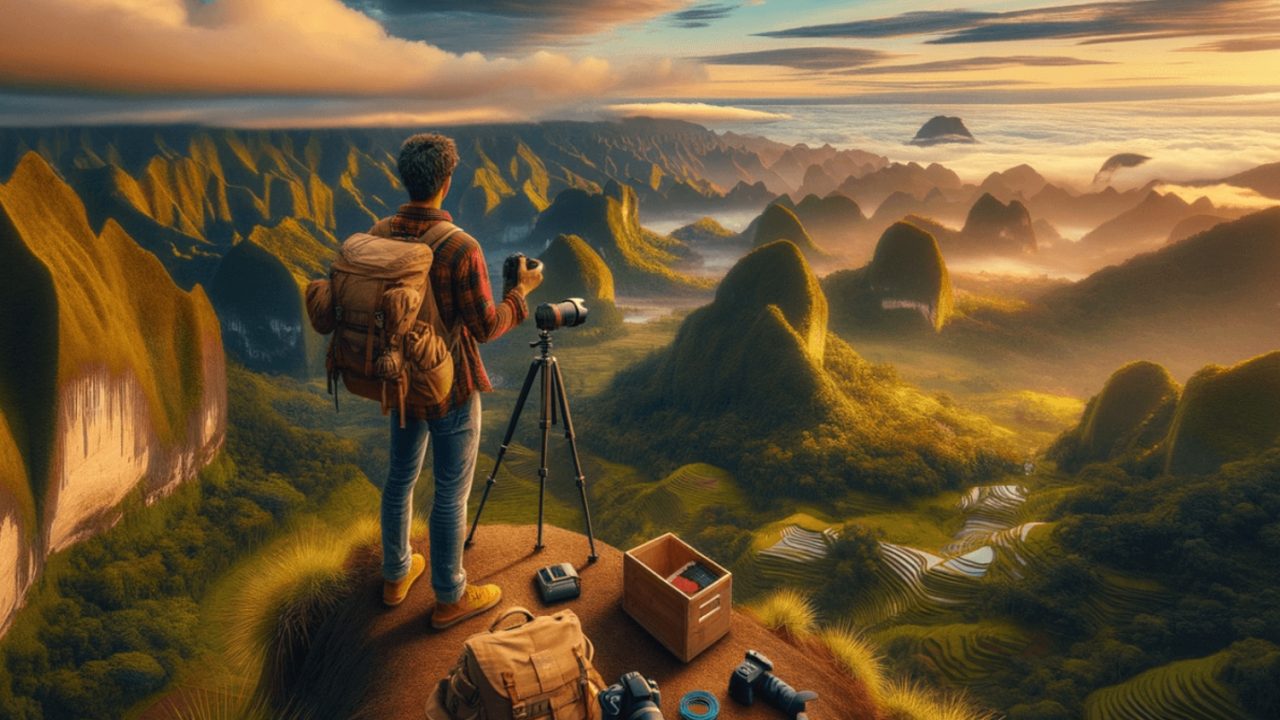Introduction
Traveling offers incredible opportunities to witness breathtaking landscapes, and capturing these moments in photos allows you to relive the experience and share the world’s beauty with others. Whether you’re a seasoned photographer or a novice with a smartphone, learning how to photograph landscapes effectively can transform your travel photos. In this ultimate guide, we’ll share tips and techniques for capturing stunning landscapes that showcase the beauty of your travels.
- Plan for the Right Time of Day
The best landscape photos are often taken during the golden hours—just after sunrise and just before sunset. During these times, the sunlight is soft, warm, and directional, creating long shadows and adding depth to your photos. The blue hour—just before sunrise or after sunset—also offers a unique, cool-toned light that can enhance your landscape shots.
Avoid the harsh midday sun, which can lead to overexposed images with unflattering shadows. Planning your shoots around the golden hours ensures that your landscapes have natural warmth and depth. - Use a Tripod for Stability
To capture sharp, clear landscape images, especially in low-light conditions, using a tripod is essential. A tripod stabilizes your camera or phone, reducing the chances of motion blur, particularly when you’re shooting long exposures, such as waterfalls or starry skies. Even slight movements can result in blurry images, so a sturdy tripod will help you achieve professional-quality photos. - Focus on Composition
Composition is key when capturing landscapes. One of the most widely used composition techniques is the rule of thirds. Imagine your image divided into a 3×3 grid. Place the horizon along the top or bottom third of the frame, and position key elements, such as trees, mountains, or lakes, at intersecting points. This creates a balanced and engaging photo.
Also, look for leading lines, such as rivers, roads, or trails, that draw the viewer’s eye into the scene. Framing your shot with natural elements, such as trees or rock formations, can also add depth and draw attention to the main subject. - Experiment with Different Perspectives
While wide, sweeping shots of landscapes are beautiful, sometimes a unique perspective can make your photo stand out. Try getting down low to the ground for interesting foregrounds, such as flowers, rocks, or grass, or find a high vantage point to showcase the landscape’s scale. Changing your viewpoint can add a fresh, artistic element to your landscape shots. - Use Filters and Settings for Depth and Contrast
In post-processing, you can enhance the contrast, colors, and sharpness of your landscape photos. However, before you shoot, you can use polarizing filters or neutral density (ND) filters on your camera lens to reduce reflections and increase saturation in skies and water. These filters help manage the exposure, bringing out vibrant blues and greens and minimizing glare from reflective surfaces.
If you’re using a smartphone, many camera apps come with built-in filters or manual controls that allow you to adjust exposure, white balance, and saturation. Experiment with these settings to find the right balance for each scene. - Capture the Details
While wide shots of landscapes are stunning, don’t forget to focus on the details. Close-up shots of rocks, tree bark, or textures in the environment can reveal unique features that enhance the story of your landscape. These details can add a layer of intrigue, making your photos feel more personal and immersive. - Embrace the Weather
Weather plays a huge role in the mood of your landscape photos. Mist, fog, rain, or snow can add a mystical or dramatic feel to your images, creating atmosphere and depth. Don’t be discouraged by cloudy or overcast skies—these conditions can result in softer, more diffused lighting, perfect for capturing subtle tones and textures in the landscape. - Edit with Care
Editing your landscape photos helps enhance the natural beauty you’ve captured. Programs like Adobe Lightroom or Photoshop offer tools to fine-tune exposure, shadows, highlights, and colors. Be mindful not to over-edit, though. The goal is to enhance the photo without losing its natural essence. Subtle adjustments will give your photos a polished, professional look.
Conclusion
Capturing stunning landscape photos while traveling requires a combination of timing, technique, and creativity. By planning your shoots around the best light, focusing on composition, and experimenting with different perspectives, you can elevate your landscape photography. Whether you’re using a professional camera or a smartphone, these tips will help you create images that reflect the true beauty of the places you visit and, most importantly, allow you to relive the magic of your travels for years to come.
#LandscapePhotography #TravelPhotography #PhotographyTips #Wanderlust #GoldenHour #NaturePhotography #PhotographyTechniques #CameraGear #TravelTips

 My Account
My Account 


